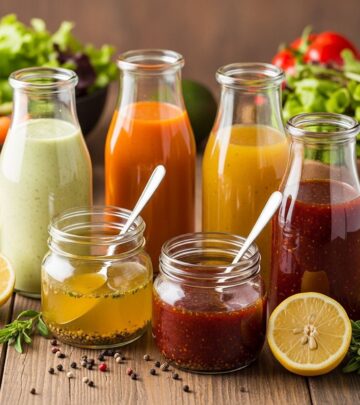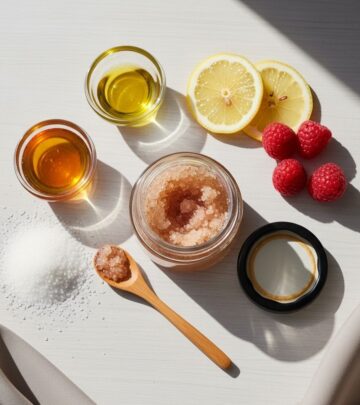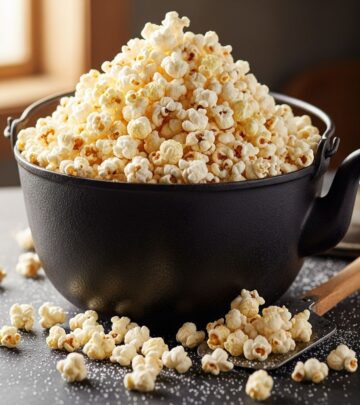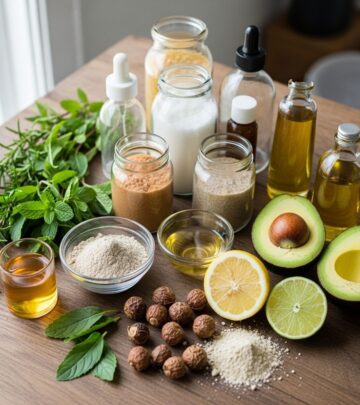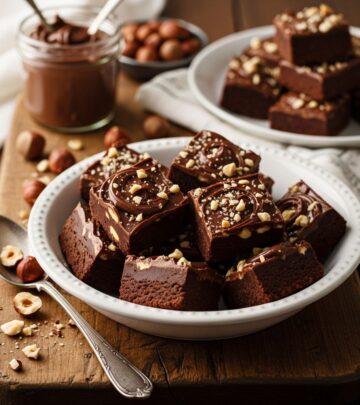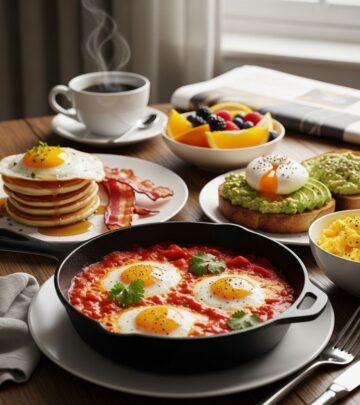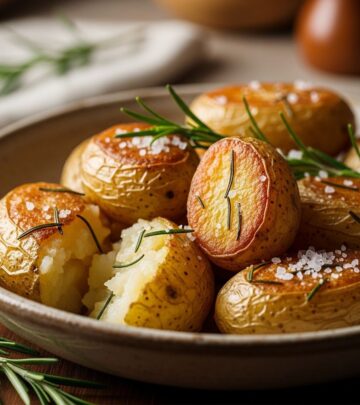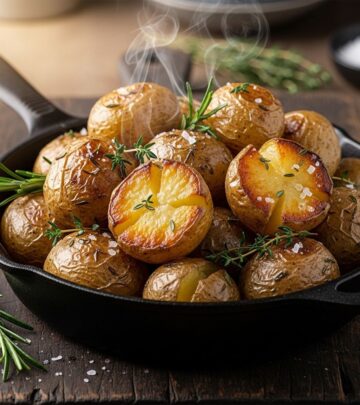Basic Crepe Recipe: 6-Ingredient Guide To Perfect Crepes
Master the art of golden, delicate delights perfect for breakfast, snacks, or dessert!
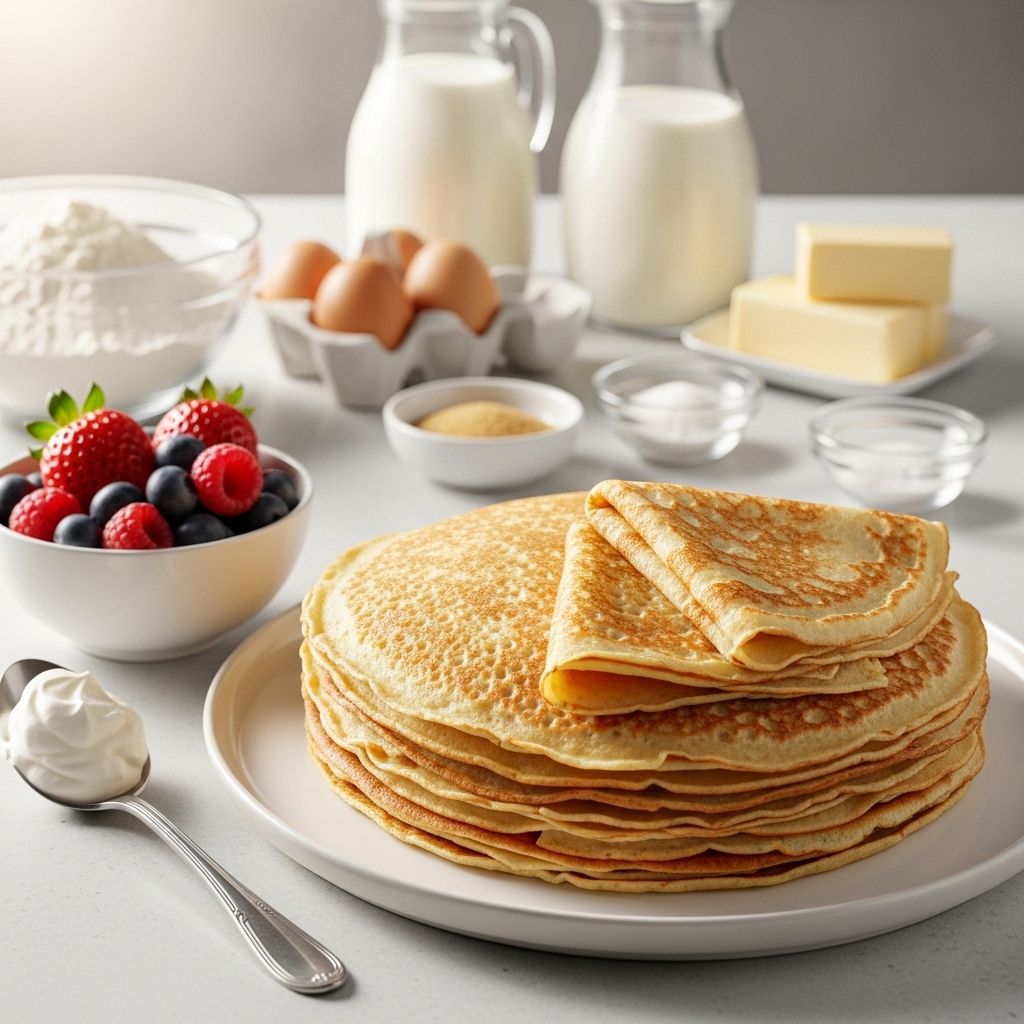
Image: HearthJunction Design Team
Basic Crepes: A Versatile Recipe for Delicious Thin Pancakes
Crepes are one of the most versatile dishes in the culinary world. These delicate, thin pancakes originate from France but have been embraced globally for their simplicity and ability to complement both sweet and savory fillings. Whether you’re planning a special breakfast, an elegant brunch, or a delightful dessert, mastering the art of crepe-making is a skill worth acquiring. This basic crepe recipe requires just a handful of common ingredients you likely already have in your kitchen, and the process is much simpler than many people assume.
Unlike their fluffier American pancake cousins, crepes are characterized by their paper-thin texture and slightly crisp edges. The batter is thinner and contains less leavening agents (or none at all), resulting in that signature delicate profile that makes them perfect for rolling or folding around various fillings. Once you’ve mastered this basic recipe, you’ll find endless possibilities for customization, from sweet breakfast crepes drizzled with maple syrup to savory dinner options filled with vegetables, cheese, or meat.
Why You’ll Love This Basic Crepe Recipe
This tried-and-true crepe recipe has earned its popularity for several good reasons:
- Simplicity: Using just six basic ingredients, this recipe keeps things uncomplicated while delivering consistently excellent results.
- Versatility: These crepes work equally well with sweet and savory fillings, making them suitable for any meal.
- Convenience: The batter comes together in minutes with ingredients most kitchens already have on hand.
- Impressive results: Despite their simplicity, homemade crepes never fail to impress guests and family members alike.
- Make-ahead friendly: The crepes can be made in advance and stored for later use, perfect for busy households.
As one satisfied cook, Sarah “Wilson” Arnold notes, “Such an easy recipe that you can doctor up any way you want. I followed the recipe, only added a bit of sugar and vanilla and they are perfect!” This flexibility is part of what makes this recipe a standout favorite among home cooks.
Ingredients for Basic Crepes
One of the beauties of this recipe is its simplicity. You’ll need just six basic ingredients to create these delicious thin pancakes:
- 2 large eggs
- ½ cup milk
- ½ cup water
- ¼ teaspoon salt
- 1 cup all-purpose flour
- 2 tablespoons butter, melted
The combination of milk and water creates the perfect consistency for the batter, while the eggs provide structure and richness. The melted butter adds flavor and helps prevent sticking. For sweet variations, some cooks like to add a tablespoon of sugar and a dash of vanilla extract to the basic recipe.
Kitchen Equipment You’ll Need
Creating perfect crepes doesn’t require specialized equipment, but having the right tools will make the process easier:
- Mixing bowl: A large bowl gives you plenty of space for whisking the batter.
- Whisk: Essential for thoroughly combining ingredients and ensuring a smooth, lump-free batter.
- Measuring cups and spoons: For accurate measurements of ingredients.
- Frying pan or crepe pan: An 8 to 10-inch nonstick pan works best, though a well-seasoned cast iron skillet can also work well.
- Spatula: A thin, flexible spatula makes flipping the delicate crepes much easier.
- Ladle or measuring cup: For consistently portioning the batter into the pan.
- Plate or wire rack: For stacking finished crepes.
While specialized crepe pans are available, they’re not necessary for making excellent crepes at home. A good quality nonstick frying pan will serve you just as well.
Detailed Instructions for Making Perfect Crepes
Step 1: Prepare the Batter
Begin by whisking the eggs, milk, water, and salt together in a large mixing bowl until well combined. This creates the liquid base for your crepe batter. Next, gradually add the flour while continuing to whisk vigorously. Once the flour is incorporated, add the melted butter and whisk until the mixture is completely smooth with no lumps. The batter should have a thin, pourable consistency—noticeably thinner than regular pancake batter.
For the best texture, some cooks prefer to blend all ingredients in a blender for 20-30 seconds until smooth, then let the batter rest for about 30 minutes. This resting period allows the flour to fully absorb the liquid and helps the gluten relax, resulting in more tender crepes. However, if you’re short on time, you can use the batter immediately after mixing.
Step 2: Heat the Pan
Heat a lightly oiled griddle or frying pan over medium-high heat. The pan is ready when a few drops of water sizzle upon contact with the surface. It’s important to find the right temperature—too hot, and your crepes will cook too quickly and possibly burn; too cool, and they’ll take too long to cook and might stick to the pan.
For each crepe, lightly brush or wipe the pan with a small amount of oil or butter. A paper towel works well for this. You need just enough to prevent sticking but not so much that the crepe becomes greasy.
Step 3: Pour and Cook the Batter
Pour approximately 1/4 cup of batter into the center of the hot pan. Immediately lift the pan off the heat and tilt it in a circular motion so that the batter spreads evenly across the surface in a thin layer. The goal is to create a crepe that’s as thin as possible while still being easy to handle.
Return the pan to the heat and cook until the top of the crepe is no longer wet and the bottom has turned a light golden brown, which typically takes about 1 to 2 minutes. You’ll know it’s ready to flip when the edges begin to lift slightly from the pan.
Step 4: Flip and Finish
Run a thin spatula around the edge of the crepe to loosen it from the pan. Then, carefully flip the crepe—either using the spatula or, if you’re feeling confident, with a quick flick of the wrist. Cook the second side until it also turns a light golden brown, which usually takes about 1 minute. The second side typically cooks faster than the first.
Transfer the finished crepe to a plate. If making multiple crepes, you can stack them with pieces of wax paper between each one to prevent sticking. Keep them warm by covering with a clean kitchen towel or placing them in a low oven (around 200°F) until ready to serve.
Serving Suggestions and Filling Ideas
The beauty of crepes lies in their versatility. They can be served in countless ways, from simple to elaborate:
Sweet Fillings:
- Fresh berries and whipped cream
- Nutella and banana slices
- Lemon juice and sugar
- Apple or pear slices with cinnamon
- Maple syrup or honey
- Greek yogurt with honey and blueberries (a favorite of reviewer Kimberly Kays)
Savory Fillings:
- Ham and cheese
- Sautéed mushrooms and spinach
- Scrambled eggs and bacon
- Smoked salmon with cream cheese
- Roasted vegetables and herbs
Crepes can be served folded in quarters, rolled into cylinders, or stacked like a cake. For an elegant presentation, fold them into triangles or create a crepe cake by layering crepes with filling between each layer.
Storage and Make-Ahead Tips
One of the advantages of crepes is that they store well and can be made in advance:
- Refrigerating: Cooked crepes can be refrigerated for up to 3 days. Stack them with pieces of wax paper between each crepe, then wrap the stack in plastic wrap or place in an airtight container.
- Freezing: Crepes freeze beautifully for up to 1 month. Place wax paper between each crepe, then wrap the stack in plastic wrap and aluminum foil or place in a freezer bag.
- Reheating: To reheat refrigerated or frozen crepes, warm them individually in a skillet over low heat for about 30 seconds per side, or microwave the stack covered with a damp paper towel.
- Batter storage: You can also refrigerate the batter for up to 24 hours. Just whisk it again before using, as it may separate during storage.
Making crepes ahead of time allows you to enjoy them for quick breakfasts or desserts throughout the week, or to prepare in advance for special brunches and gatherings.
Troubleshooting Common Crepe Problems
Even experienced cooks occasionally encounter challenges when making crepes. Here are solutions to common issues:
Problem: Crepes stick to the pan
Solution: Ensure your pan is properly heated before adding batter, and lightly oil or butter the surface between each crepe. Using a good quality nonstick pan also helps tremendously.
Problem: Crepes tear when flipping
Solution: Wait until the crepe is properly set before attempting to flip it. The edges should be dry and starting to curl up slightly. Also, make sure you’re using a thin, flexible spatula.
Problem: Batter is lumpy
Solution: Whisk vigorously, or better yet, use a blender to ensure the batter is perfectly smooth. If lumps persist, strain the batter through a fine-mesh sieve.
Problem: Crepes are too thick
Solution: Add a little more liquid (milk or water) to thin the batter. The consistency should be similar to heavy cream.
Problem: Uneven cooking
Solution: Make sure to swirl the batter quickly and evenly across the entire surface of the pan. Using a pan with a good, heavy bottom also helps distribute heat more evenly.
Frequently Asked Questions (FAQs)
Q: Can I make crepes without a special crepe pan?
A: Absolutely! While dedicated crepe pans are nice, any good quality nonstick skillet or well-seasoned cast iron pan with a flat bottom will work perfectly. The key is using a pan with a diameter of 8-10 inches and making sure it’s properly heated.
Q: How do I know when it’s time to flip the crepe?
A: The crepe is ready to flip when the top surface is no longer shiny and wet-looking, and the edges begin to turn golden brown and slightly crisp. This typically takes 1-2 minutes, depending on your heat level.
Q: Can I make the batter in advance?
A: Yes! In fact, many chefs prefer to make crepe batter at least 30 minutes to an hour before cooking to allow the flour to fully hydrate and the gluten to relax. You can refrigerate the batter for up to 24 hours. Just be sure to whisk it again before using, as it may separate during storage.
Q: Why are my crepes rubbery?
A: Rubbery crepes are usually caused by too much gluten development in the batter. To avoid this, don’t overmix the batter, and consider letting it rest before cooking. Also, make sure you’re not using bread flour, which has a higher protein content than all-purpose flour.
Q: Can I make crepes gluten-free?
A: Yes, you can substitute the all-purpose flour with a good quality gluten-free flour blend. You might need to adjust the liquid slightly, as gluten-free flours sometimes absorb moisture differently than wheat flour.
With this comprehensive guide, you’re well-equipped to create perfect crepes every time. Whether you’re serving them for a special breakfast, elegant brunch, or impressive dessert, these versatile thin pancakes are sure to delight family and friends alike. The basic recipe provides an excellent foundation for countless variations—all you need to add is your creativity and favorite fillings!
References
Read full bio of medha deb

